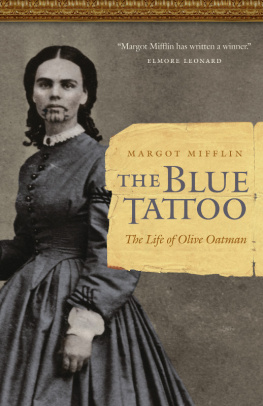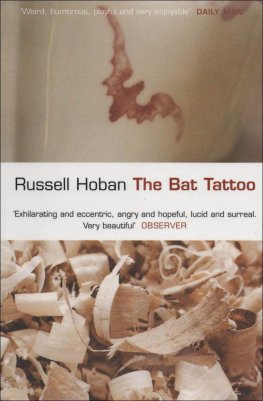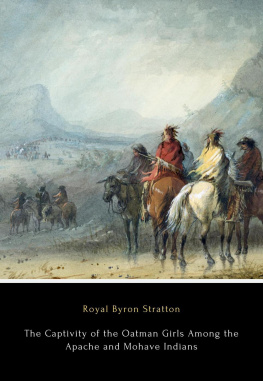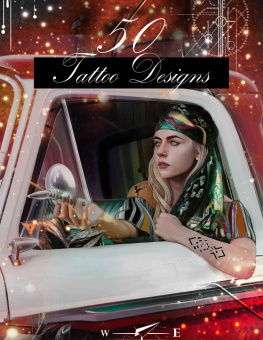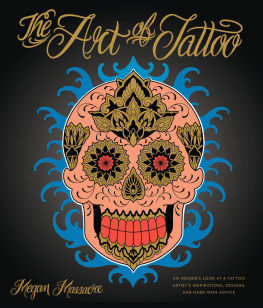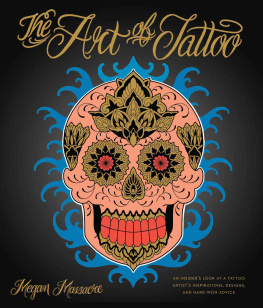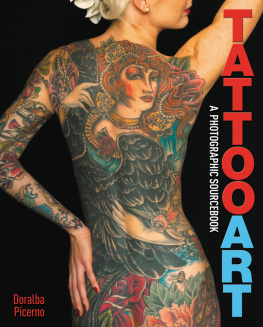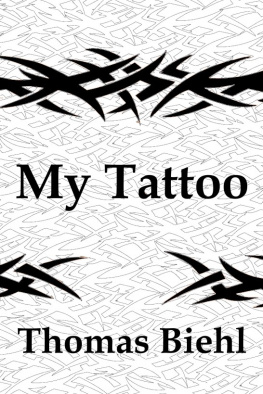Lucid and engaging, The Blue Tattoo contextualizes Olive Oatmans life by delving into Mohave culture and history (including interviews with contemporary Mohaves) and by explaining why her story captured the American popular imagination and continued to be retold and revisited so many times, in so many different media.Kathryn Zabelle Derounian-Stodola, editor of Womens Indian Captivity Narratives
Mifflins treatment of Olives sojourns [provides] an excellent teaching opportunity about Americas ongoing captivation with ethnic/gender crossings.Western American Literature
Mifflin engagingly describes Oatmans ordeal and theorizes about its impact on Oatman herself as well as on popular imagination. Her book adds nuance to Oatmans story and also humanizes the Mohave who adopted her. Recommended for general readers as well as students and scholars.Library Journal
One can read this work of non-fiction as if it were a sensational novelwith progressive feminist implications.Irish Times.com
The books already received rave reviews, and for good reason. A fascinating dose of both tattoo and American history.Tattoo History
Although Oatmans story on its own is full of intrigue, Mifflin adeptly uses her tale as a springboard for larger issues of the time.Feminist Review
Margot Mifflin is a great storyteller. The Blue Tattoo is well written and well researched; it re-opens the story of white women and men going West and Native people trying to survive these travels.June Namias, Pacific Historical Review
Mifflin catches the poignancy of this story that manages to combine the conquest of the West, life among its victims, and the national myths that justified it.Doubleday Book Club
Margot Mifflin slices away the decades of mythology and puts the story in its proper historical context. What emerges is a riveting, well-researched portrait of a young womana survivor, but someone marked for life by the experience.Tucson Weekly
Extremely well written, The Blue Tattoo is unquestionably a significant contribution to Oatman studies. Mifflins claims, close readings, and use of primary resources are engaging. We recommend The Blue Tattoo to students, specialists, and general readers of the history of the American Southwest.Overland Journal
WOMEN IN THE WEST
Series Editors
Sarah J. Deutsch
Duke University
Margaret D. Jacobs
University of Nebraska, Lincoln
Charlene L. Porsild
University of New Mexico
Vicki L. Ruiz
University of California, Irvine
Elliott West
University of Arkansas

2009 by the Board of Regents of the University of Nebraska
Postscript 2011 by the Board of Regents of the University of Nebraska
All rights reserved
First Nebraska paperback printing: 2011
Library of Congress Cataloging-in-Publication Data
Mifflin, Margot, 1960
The blue tattoo: the life of Olive Oatman /
Margot Mifflin; with a new postscript by the author.
p. cm. (Women in the West)
Originally published: Lincoln: University of Nebraska Press, c2009.
Includes bibliographical references and index.
ISBN 978-0-8032-3517-5 (paper: alk. paper)
ISBN 978-0-8032-1148-3 (cloth: alk. paper)
ISBN 978-0-8032-5435-0 (electronic: e-pub)
ISBN 978-0-8032-5436-7 (electronic: mobi)
1. Oatman, Olive Ann. 2. Oatman, Olive AnnCaptivity. 3. Indian captivitiesSouthwest,
NewHistory19th century. 4. Apache IndiansHistory19th century. 5. Yavapai
IndiansHistory19th century. 6. Mohave IndiansHistory19th century. I. Title.
E 99. A 6 O 185 2011 979.1'04092dc22
[ B ] 2010044619
To Mark and Thea Dery,
who traveled with me
at the dinner table
and through the desert.
Contents
Illustrations
22 Olive in San Jos, probably 1857 (Image has been masked due to copyright limitations.)
24 Lecture handbill (Image has been masked due to copyright limitations.)
27 The Fairchild home in Sherman, Texas (Image has been masked due to copyright limitations.)
Acknowledgments
I would like to thank the many people who helped me with this book: Oatman scholars Jennifer Putzi, who first told me about Olive; Kathryn Zabelle Derounian-Stodola, who consistently advised and encouraged me; and Brian McGinty, who was generous enough to share his knowledge and resources with a friendly competitor; my agent, Laurie Fox, of the Linda Chester Literary Agency, who was a tireless champion of this project; my astute editor, Heather Lundine, and the ever-efficient Bridget Barry, associate acquisitions editor, both at the University of Nebraska Press.
Many Oatman family descendents and their spouses contributed generously to this project: Walter Fields, who got me started and spurred me on; Edward and Dorothy Abbott, who opened their home to me; and Doris Clark, Richard Nolan, Patricia Carreon, Barbara Hawthorne, and Larry Oatman, who all provided important information.
Im grateful for the wisdom of many Southwest and Native American scholars who fielded questions and offered input, including: Michael Tsosie, Pamela Munro, Timothy Braatz, and Deborah and Jon Lawrence. I was honored and fortunate to consult with Mohave elders Llewellyn and Betty Barrackman at Aha Macav Cultural Preservation, along with Kim Cameron.
I could not have written the book without the guidance of the following librarians and archivists: Tom Berman and the reference staff at the Nyack Library; Stephen Yale of the California-Nevada Conference Archives of the United Methodist Church; Lehman College librarian Susan Voge; and Ardis Kay Smith of the lds Church History Library and Archives.
Lehman College of the City University of New York made my work possible through a series of grants, including three Shuster Fellowships, a 20045 Faculty Research Award, and a 20067 PSC CUNY GRANT .
The collections at the following institutions were crucial to this project: the Arizona Historical Society in Tucson; the University of Arizona in Tucson; the Arizona State Library, Archives and Public Records; the Sharlot Hall Museum in Prescott, Arizona; the San Diego Public Library; the Huntington Library in San Marino, California; the El Monte Historical Society Museum in El Monte, California; the Siskiyou County Historical Society in Yreka, California; the Bancroft Library at the University of CaliforniaBerkeley; the New York Historical Society; the New York Public Library; the Newberry Library in Chicago; the Oregon Historical Society Research Library in Portland; the Research Library of the Southern Oregon Historical Society in Medford; the Knight Library at the University of Oregon in Eugene; the Eagle Point Historical Society in Eagle Point, Oregon; the Jackson County Public Library in Medford, Oregon; the Rogue Valley Genealogical Society in Phoenix, Oregon; the American Antiquarian Society in Worcester, Massachusetts; the Berkshire Athenaeum in Pittsfield, Massachusetts; the St. Lawrence County Historical Association in Canton, New York; the Bloomfield Academy Museum in Bloomfield, New York; the New York State Library in Albany; the Potsdam Public Museum in Potsdam, New York; the Troy Annual Conference of the United Methodist Church in Saratoga, New York; the Beineke Rare Book and Manuscript Library at Yale University; St. Catharines Museum in Ontario, Canada; the Brock University Library in Ontario, Canada; the Berrien County Historical Association in Berrien Springs, Michigan; the National Museum of the American Indian Cultural Resources Center Archives in Suitland, Maryland; the National Anthropological Archives of the Smithsonian Institution in Suitland, Maryland; the Jerome Library at Bowling Green State University.
Next page
